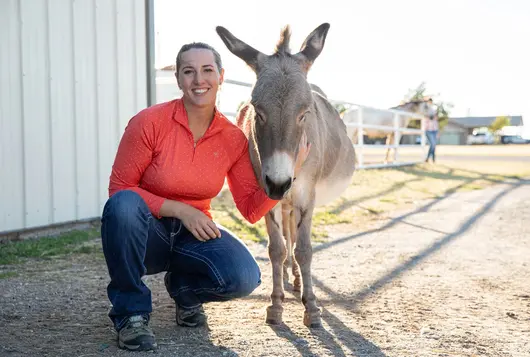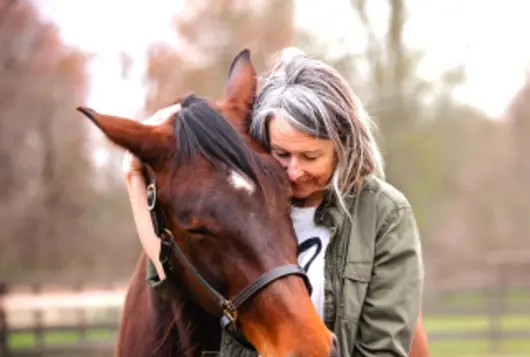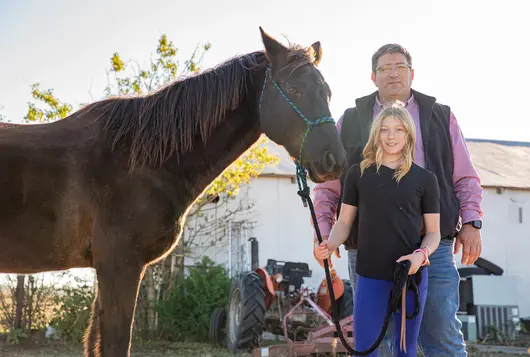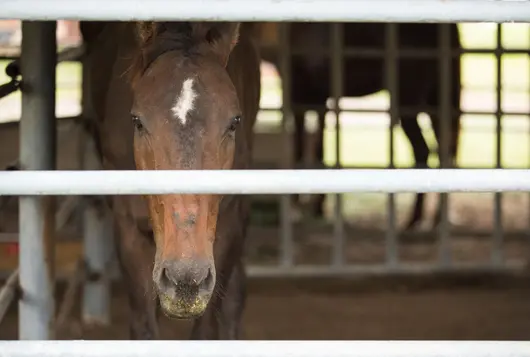How Conversational Adoption Can Help You Place More Horses in Homes

Conversational adoption is a longstanding concept in the animal welfare space that aims to make potential adopters feel welcome rather than screened for suitability. In shelters across the nation, it’s been proven to save lives, increase shelter capacity, and enable better matchmaking.
But making the shift to an adopter-centric approach can feel scary. It requires that you put aside your assumptions about potential adopters and instead trust that each person has good intentions and will do right by their new horse.
This approach is critical for groups who want to increase the number of horses they help in their community and for those who are interested in enhancing their matchmaking process. Below are the key areas where you can make the biggest impact in your shift toward a conversational approach. And don’t forget that you can take it one step at a time or implement the approach with a few initial adopters to see how it works for your organization!
The Survey/Inquiry Process
Embracing conversational adoption requires that you first establish the right tone. Adopters shouldn’t feel a need to “prove” that they are worthy of a horse; instead, they should feel celebrated for considering adoption.
To start, consider making these simple changes to your inquiry process:
- Reframe your adoption application as a “survey” rather than an “application.” This subtle shift changes the balance of power and helps adopters feel welcomed. The name alone suggests it’s the start of a relationship and not a pass-fail test. When it feels like a quiz, adopters can be tempted to subconciously shift their answers to “pass.” Reframing this process can help you gain more accurate, honest information.
- Adjust your close-ended questions to be open ended. Close-ended questions can be answered with a short “yes” or “no,” while open-ended questions invite more information that will allow you to be a more effective matchmaker.
- Close ended: “Are you experienced in handling young or untrained horses?”
- Open ended: “What type of horses do you feel comfortable handling or riding?”
Download our sample interest survey for more examples of how to improve your survey.
- Consider removing your adoption application altogether. If you want to fully embrace conversational adoption, get to know potential adopters from a one-on-one conversation. You will likely still want to record their answers in your adopter management system for your own records, but this method allows you to focus on the potential adopter in the moment and get to know them at a deeper level.
The Conversation
The matchmaking process is the most important component for setting up the adopter and their horse for success. Here’s how to be most effective:
- Ensure that the person who handles matchmaking conversations, whether they’re a staff member or volunteer, has a customer service background, loves talking to people, and believes that people’s intentions are good.
- Make sure this person has time to respond to inquiries promptly. A quick response is critical in developing trust and maintaining your professional identity in the community.
- Maintain an open-ended approach. Rather than making assumptions about the potential adopter, give them space to share their story, dreams, and journey with you. This will help build the foundation for an ongoing relationship post-adoption.
- Start out with a “yes” and be creative about how to reach that “yes” together. Even if the potential adopter doesn’t adopt that same day, you can still help their adoption dreams come true by connecting them with opportunities to develop their skills.
The Adoption
The conversational adoption approach doesn’t end once a match is made. While your contract should balance protecting the horse and providing support, it should also show trust in the adopter to do right by their new horse. Key components of this include:
- Fully transferring legal ownership.
- Encouraging an ongoing connection without making it punitive. You want the adopter to feel supported should they need to turn to you for help, not worried about punishment that could inadvertantly drive them away in a time of need.
- Allowing the adopted horse to return to the shelter if need be. Owners can make rehoming decisions as needed, but you always want to offer your organization as an option if something changes.
Download our sample adoption agreement to see how this looks in practice.
Following Up
Providing positive follow-up is crucial to support adopters and their new horses. Instead of mandatory check-ins that feel like surveillance and encourage adopters to stop responding if their ability to provide care has changed, a kind follow-up encourages them to reach out for support early on. This can look like:
- Calling or texting to check in at a cadence of, for example, three days, three weeks, and three months post-adoption.
- Inviting the adopter to an adopter-only Facebook group so they can celebrate their successes with their new horse.
- Providing opportunities for them to submit photos, whether that’s for an annual calendar, holiday promotion, or celebratory social media post.
The shift to a conversational adoption approach can feel big, but adjusting even one step in this process will improve your matchmaking abilities. When you flex your process to be welcoming of all types of experiences and background, you’re capturing the passion and support of a wide range of like-minded people who want to support equine adoption and rescue.
Downloads
Download AllWe have lots more on this subject:



